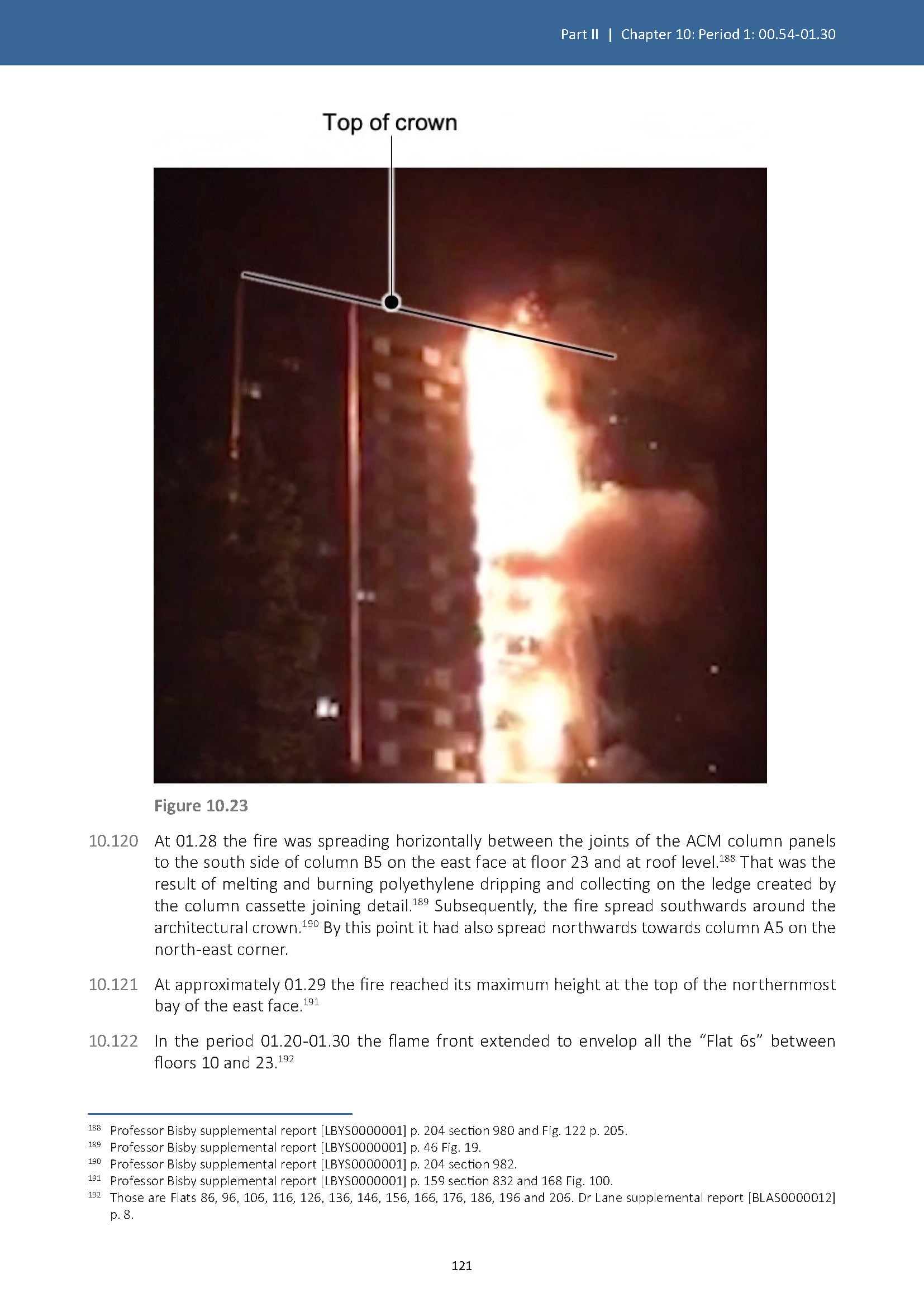
Grenfell Inquiry raises questions on cladding smoke toxicity and flammability and insulation suppliers’ information. Evidence published early 2023 by the official Grenfell Inquiry shows that Saint Gobain, who own Celotex, who supplied most of the insulation which burnt during the Grenfell Tower fire, had been questioning the smoke emissions and smoke toxicity of the PIR material several years before their installation in the Grenfell renovation in 2015. Despite this, Celotex passed fire tests for the insulation by putting the material behind fire-resistant panels (after a first test failure in which fire breached the panels) and then marketed the product as “acceptable for use” on high rise buildings, without clearly specifying the need for fire resistant protective panels to shield it. David Purser, expert to the Inquiry, has estimated that the polyethylene-core cladding and the PIR insulation both contributed around half of the toxic carbon monoxide in smoke in the Grenfell fire, but PIR also produced some hydrogen cyanide. He considers that the carbon monoxide was the primary cause of death and of incapacitation.
Simon Alengrin Grenfell Inquiry witness statement and documents, released Jen. 2023 https://www.grenfelltowerinquiry.org.uk/evidence/simon-alengrins-evidence-published-23-january-2023
“Grenfell Tower insulation firm behaved ‘dishonestly’”, BBC 16 November 2020 https://www.bbc.com/news/uk-54967895
“The toxic smoke files: new Grenfell inquiry evidence reveals knowledge of risks before deadly blaze”, Inside Housing, 23 February 2023 https://www.insidehousing.co.uk/insight/the-toxic-smoke-files-new-grenfell-inquiry-evidence-reveals-knowledge-of-risks-before-deadly-blaze-80313